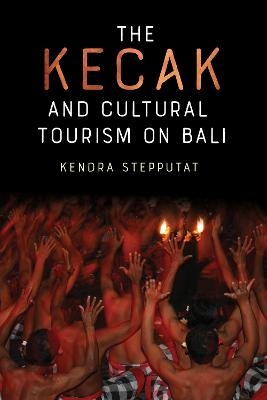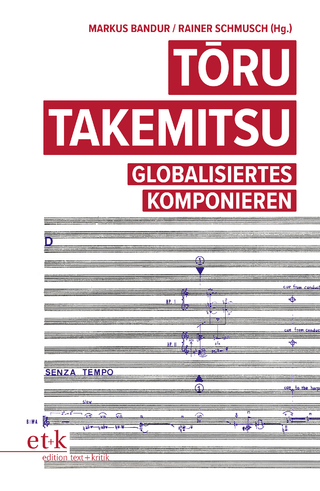
The Kecak and Cultural Tourism on Bali
University of Rochester Press (Verlag)
978-1-64825-031-6 (ISBN)
The kecak is one of the best-known dramatic dance performance practices on Bali. Based on the ancient Indian Ramayana epic, it is performed by an ensemble of male and female solo dancers and accompanied by a hundred men who function as both musicians and living scenery. Since its creation in the 1930s, the kecak has been primarily a tourist performance.
Drawing on over twenty years of fieldwork and meticulous archival study, Kendra Stepputat provides here a comprehensive study of the history, form, and cultural significance of the kecak. The first part of the book focuses on the kecak in its present form, including musical, choreographic, and dramatic elements. The connection between cultural tourism on Bali and kecak performance practice is analyzed in detail, including the dependency between tourism professionals and artists and ways of promoting the kecak. Tourists' perspectives on the kecak are addressed separately. The second part deals with the genesis and development of the kecak from the 1930s onward, exploring how it became and stayed a tourist genre for more than eighty years.
KENDRA STEPPUTAT is Assistant Professor and currently Head of the Institute of Ethnomusicology at the University of Music and Performing Arts (KUG) Graz (Austria).
Introduction
Part 1: the Presence
Chapter 1. Kecak -- The Music
Rhythmic structures: juru klempung, juru gending (first part), pola cak
Intermission: scales in kecak
Melodic elements: juru gending (second part), juru tembang, and pangalang
The lead: juru tarek and dalang
Use of stage space by the jurus and pengecaks
Chapter 2. Kecak -- The Dance
Movements of the pengecak group
Genre influences on the solo characters' movements
Balinese dance characterization: halus, keras, and kasar
The solo characters' individual dance styles
Choreomusical interrelations between pengecaks and soloists in music and dance
Chapter 3. Kecak -- The Drama
Ramayana kakawin
Ramayana adaptations in Balinese performing arts
The kecak compromise: stage design, story, entrances
The Kecak Ramayana
"Kepandung Sita" kecak performance
Chapter 4. The Social Organization of Kecak
Aims and structures of kecak organizations and groups
The members of a kecak group
Teaching a kecak group
Performance quality and performance quantity
Chapter 5. Kecak -- The Tourist Performance
The study of tourism and culture
The development of cultural tourism on Bali
Kecak in cultural tourism
Tourists' perspectives
The authenticity issue
Some concluding remarks on kecak in tourism
Part 2: The History
Chapter 6. From Sanghyang Dedari to Kecak
Ritual structures
Musical structures
Dance structures
Sanghyang dedari in the early twenty-first century
Performing sanghyang dedari on film and on stage
Sanghyang dedari in performance at the end of the twentieth century
Chapter 7. The First Kecak
1931: Kecak in "Insel der Dämonen"?
1926 to 1931: Changes in setting, choreography, and music
Related kecak experiments in the 1920s and 1930s: Janger
1935: Kecak documented by Vicki Baum
Villages and organizations: Bedulu and Bona
Balinese artists: I Wayan Limbak and I Nengah Mudarya
Expatriates: Walter Spies and Katharane Mershon
Colonial power structures
Who created the kecak?
Chapter 8. Almost a Century of Kecak
1930s-1940s: Kecak becomes a tourist attraction
Development in Bona and Bedulu
Early tourists' conceptions of the kecak
During and after the Second World War: Kecak deadlocked
After the coup d'état and political persecution: Kecak standardization
The early twenty-first century: The Bali bombings
An alternative kecak approach: Kecak kreasi
Some concluding remarks: Does the kecak have a future?
Appendixes
1. Kecak dan Wisata Budaya di Bali (Indonesian Summary)
2. Kecak Groups of Bali in 2000-2001 (Badung and Gianyar)
3. Facsimile of a letter from Walter Spies to Leo Spies, 1932
Glossary
Bibliography
Index
| Erscheinungsdatum | 16.11.2021 |
|---|---|
| Reihe/Serie | Eastman/Rochester Studies Ethnomusicology |
| Zusatzinfo | 23 music exx, and 81 b/w illus. |
| Verlagsort | Rochester |
| Sprache | englisch |
| Maße | 152 x 229 mm |
| Gewicht | 1 g |
| Themenwelt | Kunst / Musik / Theater ► Musik ► Musiktheorie / Musiklehre |
| Kunst / Musik / Theater ► Theater / Ballett | |
| Sachbuch/Ratgeber ► Sport ► Tanzen / Tanzsport | |
| Wirtschaft | |
| ISBN-10 | 1-64825-031-9 / 1648250319 |
| ISBN-13 | 978-1-64825-031-6 / 9781648250316 |
| Zustand | Neuware |
| Informationen gemäß Produktsicherheitsverordnung (GPSR) | |
| Haben Sie eine Frage zum Produkt? |
aus dem Bereich


